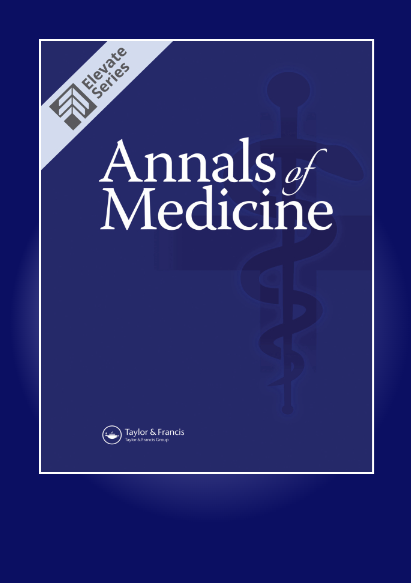功能化纳米粒子在癌症治疗中诱导铁变态反应的治疗类型和优势。
IF 4.3
2区 医学
Q1 MEDICINE, GENERAL & INTERNAL
引用次数: 0
摘要
背景癌症治疗方案的临床疗效仍不尽如人意,然而,铁突变驱动的治疗策略因其显著的肿瘤抑制作用而为肿瘤治疗带来了新的希望。基于生物的小分子诱导剂是诱导铁氧化的传统方法。然而,一些分子药物的溶解度有限、靶向细胞的能力差、代谢快,这阻碍了它们长期诱导铁氧化的能力。目的:为了梳理近年来纳米粒子在癌症治疗中诱导铁变态反应的进展,并从新的角度对纳米粒子进行全面分类:我们全面检索了 PubMed 和 Embase 等数据库。材料:我们全面检索了 PubMed 和 Embase 等数据库,检索时限为数据库建立后至 2023 年。所有文献均与 "铁中毒"、"纳米颗粒"、"纳米给药系统"、"肿瘤"、"癌症 "相关。根据纳米粒子的特性,我们将其分为六类:(1)氧化铁纳米粒子(2)铁基转换纳米粒子(3)核壳结构(4)有机框架(5)二氧化硅纳米粒子(6)脂蛋白纳米粒子。根据 NPs 的治疗类型,可将其分为以下几类:(1)NPs 诱导的铁突变相关免疫疗法(2)NPs 负载药物(3)NPs 靶向疗法(4)多药耐药性疗法(5)NPs 基因疗法(6)能量转换疗法。结论本综述所获得的见解可为原创性 NPs 和纳米给药系统的开发提供思路,为相关纳米材料在临床癌症治疗中的应用铺平道路,并推动纳米技术在医学领域的应用和发展。本文章由计算机程序翻译,如有差异,请以英文原文为准。
Therapeutic types and advantages of functionalized nanoparticles in inducing ferroptosis in cancer therapy.
BACKGROUND
The clinical efficacy of cancer treatment protocols remains unsatisfactory; however, the emergence of ferroptosis-driven therapy strategies has renewed hope for tumor treatment, owing to their remarkable tumor suppression effects. Biologically based small-molecule inducers are used in conventional method to induce ferroptosis. Nevertheless, some molecular drugs have limited solubility, poor ability to target cells, and fast metabolism, which hinder their ability to induce ferroptosis over a prolonged period. Fortunately, further investigations of ferroptosis and the development of nanotechnology have demonstrated that nanoparticles (NPs) are more efficient in inducing ferroptosis than drugs alone, which opens up new perspectives for cancer therapy.
OBJECTIVE
In order to organize a profile of recent advance in NPs for inducing ferroptosis in cancer therapy, and NPs were comprehensively classified in a new light.Materials and methods: We comprehensively searched the databases such as PubMed and Embase. The time limit for searching was from the establishment of the database to 2023.11. All literatures were related to "ferroptosis", "nanoparticles", "nanodelivery systems", "tumors", "cancer".
RESULTS
We summarized and classified the available NPs from a new perspective. The NPs were classified into six categories based on their properties: (1) iron oxide NPs (2) iron - based conversion NPs (3) core-shell structure (4) organic framework (5) silica NPs (6) lipoprotein NPs. According to the therapeutic types of NPs, they can be divided into categories: (1) NPs induced ferroptosis-related immunotherapy (2) NPs loaded with drugs (3) targeted therapy of NPs (4) multidrug resistance therapy (5) gene therapy with NPs (6) energy conversion therapy.
CONCLUSIONS
The insights gained from this review can provide ideas for the development of original NPs and nanodelivery systems, pave the way for related nanomaterials application in clinical cancer therapy, and advance the application and development of nanotechnology in the medical field.
求助全文
通过发布文献求助,成功后即可免费获取论文全文。
去求助
来源期刊

Annals of medicine
医学-医学:内科
CiteScore
4.90
自引率
0.00%
发文量
292
审稿时长
3 months
期刊介绍:
Annals of Medicine is one of the world’s leading general medical review journals, boasting an impact factor of 5.435. It presents high-quality topical review articles, commissioned by the Editors and Editorial Committee, as well as original articles. The journal provides the current opinion on recent developments across the major medical specialties, with a particular focus on internal medicine. The peer-reviewed content of the journal keeps readers updated on the latest advances in the understanding of the pathogenesis of diseases, and in how molecular medicine and genetics can be applied in daily clinical practice.
 求助内容:
求助内容: 应助结果提醒方式:
应助结果提醒方式:


